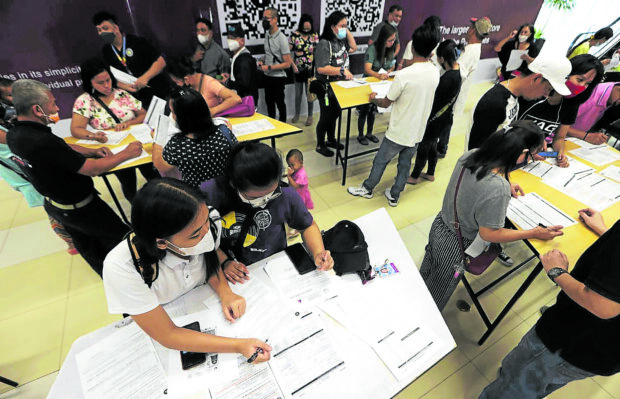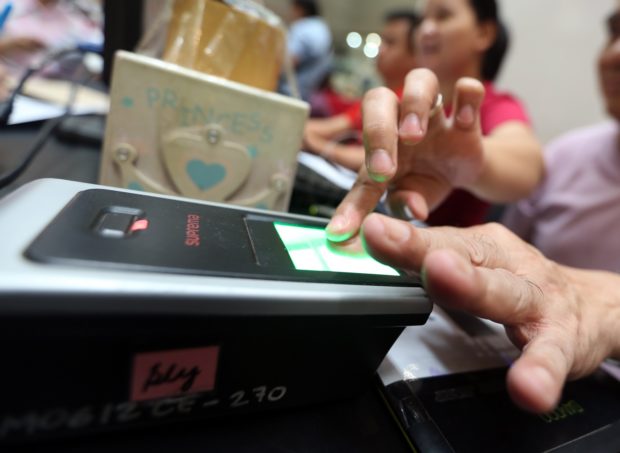MANILA, Philippines — Out of nearly 500,000 Filipinos who were found to have registered as voters twice or more times, almost 120,000 will face investigation for apparently committing the election offense intentionally, according to the Commission on Elections (Comelec).
As of the weekend, the poll body reported at least 491,017 double or multiple registrants after the last round of voter registration in January, ahead of the barangay and Sangguniang Kabataan elections in October.
The double or multiple registrations were detected through Comelec’s automated fingerprint identification system which cross-matches the biometrics data submitted by the registrants.
According to Comelec, most of the double or multiple registrants registered again as voters in a different city or municipality because of a change in their address.
While their application for transfer may have been approved, in most cases, the voters’ original registration remained in the database, Comelec said.
However, 118,178 people were found to have registered again as voters under questionable circumstances, the poll body noted.
‘Clear design’
“[This] is a clear instance of a registered voter applying for a new registration, be it through the same or different name, or the same or different address, or the same or different picture. What is clear is that the fingerprints belong to one and the same person/s,” said Comelec spokesperson Rex Laudiangco.
“This requires therefore not only a deletion of the application for new registration, but more so an investigation whether or not the new application is intentional and coupled with a clear design to become double or multiple registrants,” he added.

LAST DAY OF VOTERS REGISTRATION| Residents of Quezon City troop to the SM North EDSA, North Towers, Jan. 31, 2023, on the last day of Commission on Elections voters registration for the Barangay and Sangguniang Kabataan Elections. (File photo by NIÑO JESUS ORBETA / Philippine Daily Inquirer)
MANILA, Philippines — He said the election boards on their own would conduct an investigation and may file criminal charges against intentional double or multiple registrants for violating the Voter’s Registration Act of 1996 or Republic Act No. 8189.
Of the total number of double or multiple registrants, Comelec said 233,282 had applied for transfer of voting place for the first time.
“Unfortunately, while the transfer was granted, the original registration which should have been deleted, weren’t removed,” said Laudiangco, stressing “there is no fault on the part of the [registrant].”
“What will happen is an administrative deletion of the old registration records on the part of the election officer where the applicant originated from,” he explained.
Not applicant’s fault
Another 119,652 of the double or multiple registrants had already transferred and applied again for another transfer of voting place, although the records based on the first transfer were not deleted “through no fault of the applicant.”
Lastly, 19,905 of the double or multiple registrants already have existing voter records but applied for new registration when they claimed to intend to apply for transfer.
“In this case, which may or may not be intentional on the part of the applicant—and may or may not be subject… to an investigation—the new registration records must be deleted in order to ensure that only one registration record remain, …the old records with the ‘transfer’ type of registration,” Laudiangco said.


